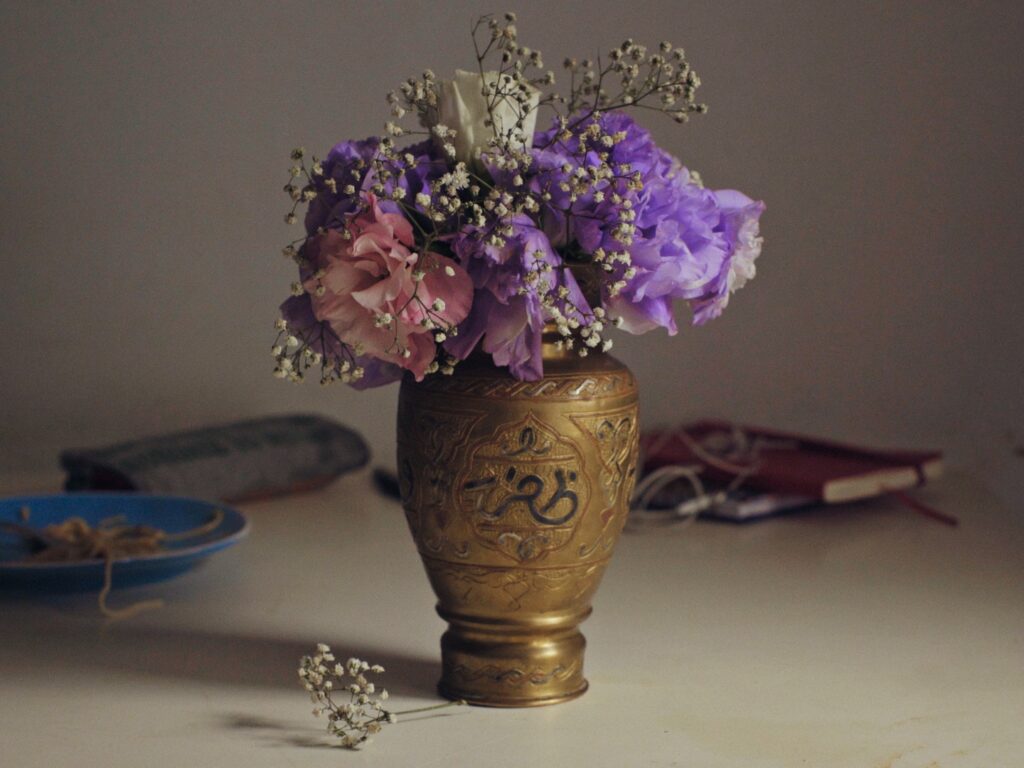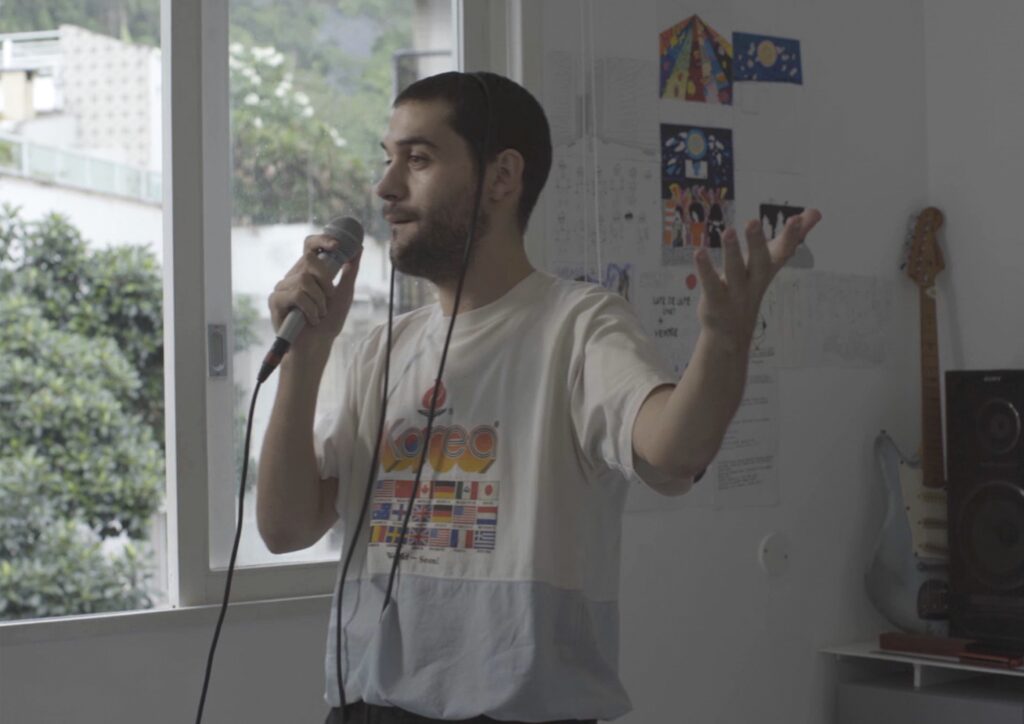Leonardo Mouramateus in conversation with Marco Cipollini
Life Lasts Two Days evolves in a delicate and playful way around the complex relationship between two twin brothers (Rómulo and Orlando) who have long since lost sight of each other. What was the starting point of the film?
It is difficult to say precisely where we started, because some of the stories that make up the film have been with us for a long time. The fact is that in 2017, I worked as a script supervisor for Sol Alegria (by Mariah and Tavinho Teixeira), a film in which Mauro Soares and Mariah played siblings. Mauro and I had just finished premiering Antonio One Two Three, and we wanted to continue filming, taking some ideas from the first feature further. Because of Sol Alegria we spent some time in Brazil, the country’s political climate was already heralding the extreme right’s rise to power and, in addition, chikungunya had reached my hometown, Fortaleza, and I was quite distressed about the health of my family and friends. It was a period of great euphoria and melancholy. Mauro and I spent a lot of time together with Mariah on set. It was very enjoyable for me to watch the playing of the two as performers at the same time as our friendship grew. By the end of filming, it was clear to all three of us that we needed to make a film together. So I started to think about a structure in which the delusions we were talking about could fit.
The opportunity to start filming came that same year. We took advantage of an award in services from an equipment rental company, and of the fact that we would be in Rio de Janeiro to shoot, something that only worked out thanks to Fernanda Romero, the production manager, who was as enthusiastic as we were. The first 20 minutes we shot became the film’s first chapter. From then on, we already had the first pieces of the game, but also an excuse to film more chapters.

The two twins, who present considerable personality differences, live respectively in Brazil and in Portugal, two places you know well. Does the nature of the two brothers reflect to some extent your vision of these two countries? And more generally, could you tell us how you constructed their characters?
The idea of twin brothers may have been born in the kitchen of our house, talking about soap opera clichés. That is why we thought of one as “good” and the other as “bad”. It would also not be wrong to say that Mauro’s fluency with the Brazilian accent inspired this proposal. Around the same time, we came across the story of an acquaintance who had grown up separated from his twin brother, one raised by his father, the other by his mother — this kind of coincidence amuses us at the same time that it entices us to continue on the paths we took.
We are interested in the fact that the composition of a character starts more from small characteristics, gestures, rather than from a psychological evaluation. For example, I wanted Orlando to have a mustache and something like Patrick Cowley’s style. Hence, if one of the twins has a mustache, the other can’t have one. If one writes a book, the other capitalizes on them. The anecdote of the twin brothers gave us the basis for the whole game.
Something that mattered a lot for this character composition was to think about the dynamics they establish with the city and with other characters around. We see the city through the brothers, and we discover who they are by seeing how they integrate within the landscape. There is no possible symmetry between a country that has exploited the other for centuries. Much more than representing Portugal and Brazil, the two characters embody the contrast between the foreign and the local. Because I have been living 8 years away from Fortaleza, I carry this strangeness both in Portugal and in Brazil.
In the film, the reconnection between the two occurs through a manuscript begun by Rómulo, which is completed by his brother Orlando, according to the literary game of cadavre exquis. Does this procedure in any way reflect the writing method adopted for the film’s screenplay, which you co-wrote with Mauro Soares? Otherwise, could you tell us how you and Mauro collaborated to write the film?
Cadavre exquis was not our method, but this is the impression that the whole thing ends up giving. It’s because, even though we had a hypothetical structure, we were open to giving new meaning to what was left behind, and even to the film as a whole, as we went along. We knew the paradigm of each chapter but we didn’t really know exactly what paths we would take to get there.
It is challenging to think of a structure that can encompass so many desires and at the same time be viable. Since this is a film with an atypical production mode and no script treatments, everything is done within the boundaries between what is necessary and what is possible. For both economic and aesthetic reasons, we are always in the game, constructing fiction from what we have around us.
..everything is done within the boundaries between what is necessary and what is possible..
The collaboration with Mauro is all based on our ordinary life. Watching movies or cooking, we come up with ideas, and some of them survive until the next day. When I start describing the situations to him, at the same time we start discussing the staging and the tone of the characters. Before writing it down, this construction happens in long conversations, scene by scene, and often on set, take by take — the film is written hand-to-hand.

The film, divided into five chapters, presents an articulate and surprising chiastic structure, in which several layers intertwine and overlap. Could you tell us in detail how you conceived it? Were certain solutions found during editing?
The structure of the film mimics the chapters of a novel. It is, after all, a film about books, and about one book in particular, the one that Romulo writes for his brother. I was excited that the chapters could play with the spectator’s expectations: we see one story; then we see the same actors playing other characters; then we discover that the two stories are connected… and so on until the end of the film. But this structure could not be a simple frame, it had to reflect the main wound of the story, the mismatch between these two brothers.
But this structure could not be a simple frame, it had to reflect the main wound of the story, the mismatch between these two brothers.
We shot the film between 2017 and 2019, each of the three stages (Rio de Janeiro, Lisbon, Fortaleza) in a different year. It was essential that the editing happen while we were shooting the project — in the first part, Tomás von der Osten, the editor, was even on set. Although the sequence of chapters in the film is the same as imagined, the rhythm, the tone, the need to create and subtract scenes, came from this almost literary editing process done by Tomás.
An important contribution to the interweaving of the plot is provided by the fact that some actors, in particular Mauro Soares and Mariah Teixeira, play multiple roles, according to a ludic mechanism that is at times disorienting. How did you direct and work with the actors?
The fact that Mauro is both actor and scriptwriter means that the work with the actors exists from the moment the characters are conceived. The idea of multiple roles must have come from some kind of provocation from or to Mariah (“If Mauro plays two characters, Mariah plays three!”), which seemed to make perfect sense. Seeing the different interactions of the two, dealing with what has already been seen, noticing the difference between these postures, is part of the mirroring game that the film provokes.
In a film like this you have to have different strategies for directing the actors in each scene. We brought together people with very diverse experiences. We found the tone as we repeated, whether in rehearsals or on the set. I am attracted to the work of some directors (Renoir, Lubitsch…) who do not try to give a single tone to the performance of the entire cast, but rather orchestrate these differences. Mauro’s performance becomes a kind of tuning fork – since almost all the scenes are interactions of his characters with others – for the different notes played by each performer.
In a way, it feels as if the articulation of the film follows its own musical logic. And I suppose it’s no coincidence if music and musical composition take shape in the film at certain key moments, illustrating what seems to be the spirit and mood behind the making of the film. How did these scenes come about and what role does music play for you?
A music teacher once told me that Antonio One Two Three had a musical structure. I was very happy with this because intimately, I am more connected with rhythm, variations, than with the dramaturgical coherence of a script. This film has something of that same desire. Here I reunite long-time collaborators, friends with whom I share my life: Aline Belfort, Guilherme Farkas, Tomás von der Osten… Fernando Pereira Lopes, the composer, is one of them. We like Objekt as much as Bad Bunny.
In this film the music is sung by Rómulo, who is a kind of troubadour. I liked the idea that he would open his heart not only through the book he wrote but also through music… So from my conversations with Fernando came demos. I wrote lyrics over these demos, which Mauro interpreted in his own way. I have the feeling that in these musical parts (at the beginning and the end, but also on the dance floor of the bar) the film is laid bare. One of these days we will have to make a musical.
This interview is taken from the FIDMarseille website and conducted in the context of the world premiere of the film.